A long and centuries-old tradition links Tuscany ’s wine producers toart. The region has always had wine producers among its wealthiest patrons, through a history that unfolds over the centuries. It would suffice to think of the great families that have long been active in the wine sector, such as the Antinori, Serristori, and Frescobaldi, who already centuries ago, with the proceeds of their activities (the Antinori and Frescobaldi have been active in viticulture since the 14th century, while the Serristori since the late 17th century), financed important artistic works. Examples might include the Frescobaldi Chapel inside the basilica of Santo Spirito in Florence, the Serristori villas dotting the Florentine countryside and the Valdarno, or the rich Antinori chapel, or the exterior chapel of the church of Saints Michael and Gaetano in Florence, one of the most sumptuous in the city.
The combination of art and wine is so strong that it has even been the subject of research. In 2016, for example, the Wine, Food & Arts in Italy report produced by Laboratorio Gavi together with CeSTIT - Centro Studi per il Turismo dell’Università di Bergamo, found a strong link between wineries and art production, finding that those who invested in a wine cellar d’auteur saw increases in sales of up to 67 percent more, that wineries that focused on auteur labels (a type of activity that has been going on since at least the 1950s-60s: many are the companies that have called in well-known artists to design the labels of their bottles) have seen increases of up to 40 percent, that an installation that enriches a winery can bring an increase in value of up to 25 percent. Then there are companies that sponsor restorations, hold art awards, commission works to be spread throughout the territory by prominent artists, or set up wine museums. Patronage of wineries can have different purposes: it can be seen as an investment in the winery’s image, it can serve as a promotional vehicle, or it can simply be a mere expedient to make one’s winery more welcoming. Or, as in the case of the producers mentioned above, it can continue a centuries-old activity.
For what reasons, however, is there such a strong connection in the wine sector that few other industries are aware of? There could be several reasons: historical reasons (the activity of winemakers and vintners is very old, and the great wine producers commissioned works of art in ancient times as well), cultural reasons (those who produce wine see themselves as repositories not only of a technique but also of a culture that in turn has a long tradition, and thus finds strong connections with the world of art: moreover, wine itself has been the protagonist of artistic literary works, since in all eras we find depictions or representations of people intent on drinking wine), social reasons (wine, like art, pleases so many people, and consequently gathers boundless communities of enthusiasts, not to mention that a visit to a winery is often considered on a par with a visit to a museum).

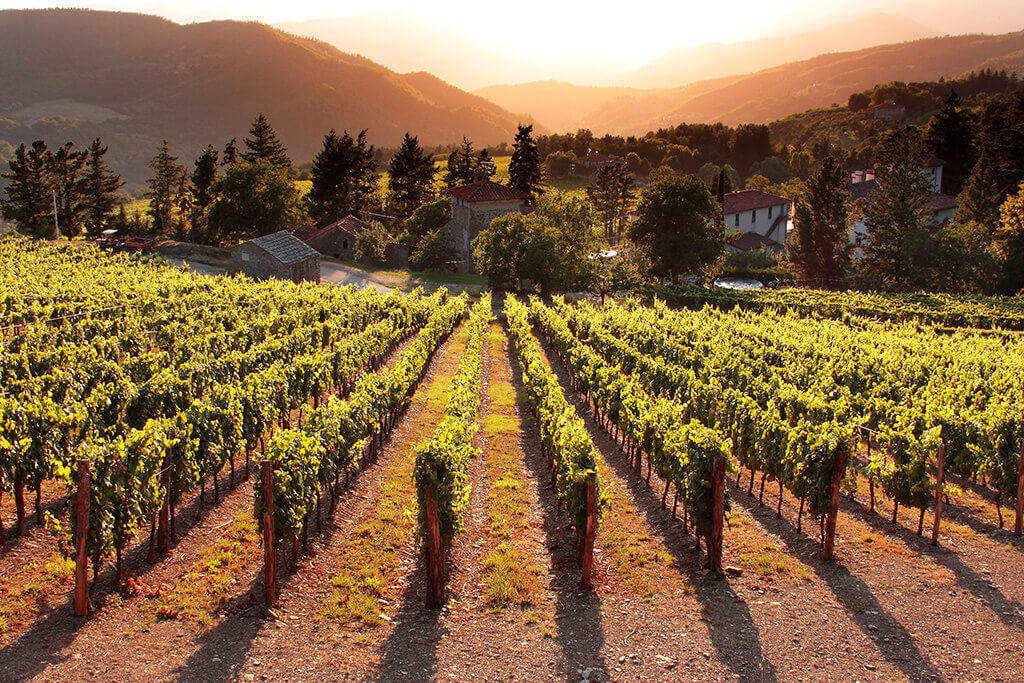
Here, then, among the rows of Tuscany’s vineyards there is a world of works of art that, especially since the early 2000s, has become increasingly widespread, and alongside the large, historic producers have been joined by many smaller wineries that have filled the regional territory with installations, paintings and sculptures, architectural enterprises that now give rise to a distinctive panorama that has few other equals in Italy. Among the most enduring enterprises is that of Castello di Ama, home of the winery of the same name that produces Chianti Classico, in the countryside of Gaiole in Chianti, near Siena. The winery, on the initiative of winemaker Marco Pallanti and his wife Lorenza Sebasti, who serves as managing director, initiated its own art project in 1999, when together with Galleria Continua it planned to turn the castle into the center of a contemporary art collection (for which, in 2015, a curator, Canadian Philip Larrat-Smith, was also appointed for the first time, helping to choose the artists who enter the collection. Castello di Ama’s collection consists of works by artists such as Michelangelo Pistoletto (the first artist named by the company: It is his The Tree of Ama, a 2000 work in which two mirrors installed on a tree multiply what surrounds it), Giulio Paolini, Anish Kapoor, Jenny Holzer, Louise Bourgeois, Kendell Geers and several others, who have arrived at the rate of one work per year: all are asked to work on the spaces of Ama Castle or those surrounding it.
As anticipated, families active in wine production for centuries also continue their patronage activities. The Antinori winery, whose date of birth is traditionally set at 1385, has begun a systematic operation of buying works of art since 2011, as Alessia Antinori explained, “Since 2011, we have been buying two, three works a year, commissioned directly from artists, who have access to the archives and historical art collection and build a bridge between the past and the future.” Thus was born theAntinori Art Project, in conjunction with the opening of a new winery, also in the lands of Chianti Classico, to be exact near San Casciano val di Pesa: the winery sees it as a project “that moves from the idea of creating a natural continuation of the collecting activity that is part of the family tradition, directing it, however, toward the arts and artists of our time”, and which is configured as “a platform of interventions in the contemporary sphere - carried out in collaboration with established curators - that gathers under a single coherent project all the activities put in place in this area.” The first nucleus arose between 2012 and 2013, under the curatorship of Chiara Parisi, who involved three artists, namely Yona Friedman, Rosa Barba and Jean-Baptiste Decavèle, all of whom were called upon to create works in dialogue with the place. In 2014, Chiara Parisi was succeeded by Ilaria Bonacossa , who called in artists such as Tomás Saraceno and Giorgio Andreotta Calò, and the project then continued in the following years (except for an interruption due to the pandemic: the Antinori Art Project activity restarted in the summer of 2023), always with the acquisition or commissioning of artworks.
The winery itself is a work of art: in fact, the structure that houses Antinori Art Project bears the signature of the architecture firm Archea Associati, which has designed a structure that is partly hypogeal, develops inside a hill and emerges through some particular signs, such as the famous helicoidal staircase that has become over time a sort of symbol of the estate. And in 2022, the Antinori Winery in Chianti Classico was ranked first in the annual World’s Best Vineyards ranking, which is compiled each year by five hundred wine insiders who list the world’s best wineries.
It should be noted, then, that Antinori’s patronage is also expressed through forms that make the contemporary coexist with the ancient: in 2016, for example, the winery financed the restoration of a precious lunette by Giovanni della Robbia, depicting the Resurrection and preserved at the National Museum of the Bargello in Florence. The splendid glazed terracotta sculpture was commissioned around 1520 by Niccolò di Tommaso Antinori, one of the most famous members of the family, and the company, to celebrate the completion of the restoration, also commissioned one of Italy’s leading contemporary artists, Stefano Arienti, to create a’work (entitled Scena fissa) inspired precisely by Della Robbia’s lunette, which then resulted in a set of twenty white canvases reproducing the parts of Giovanni della Robbia’s work, transformed into a kind of set designed to literally make the public move within the scene imagined by the great Renaissance ceramist and thus offer a “dynamic” interpretation of the masterpiece.
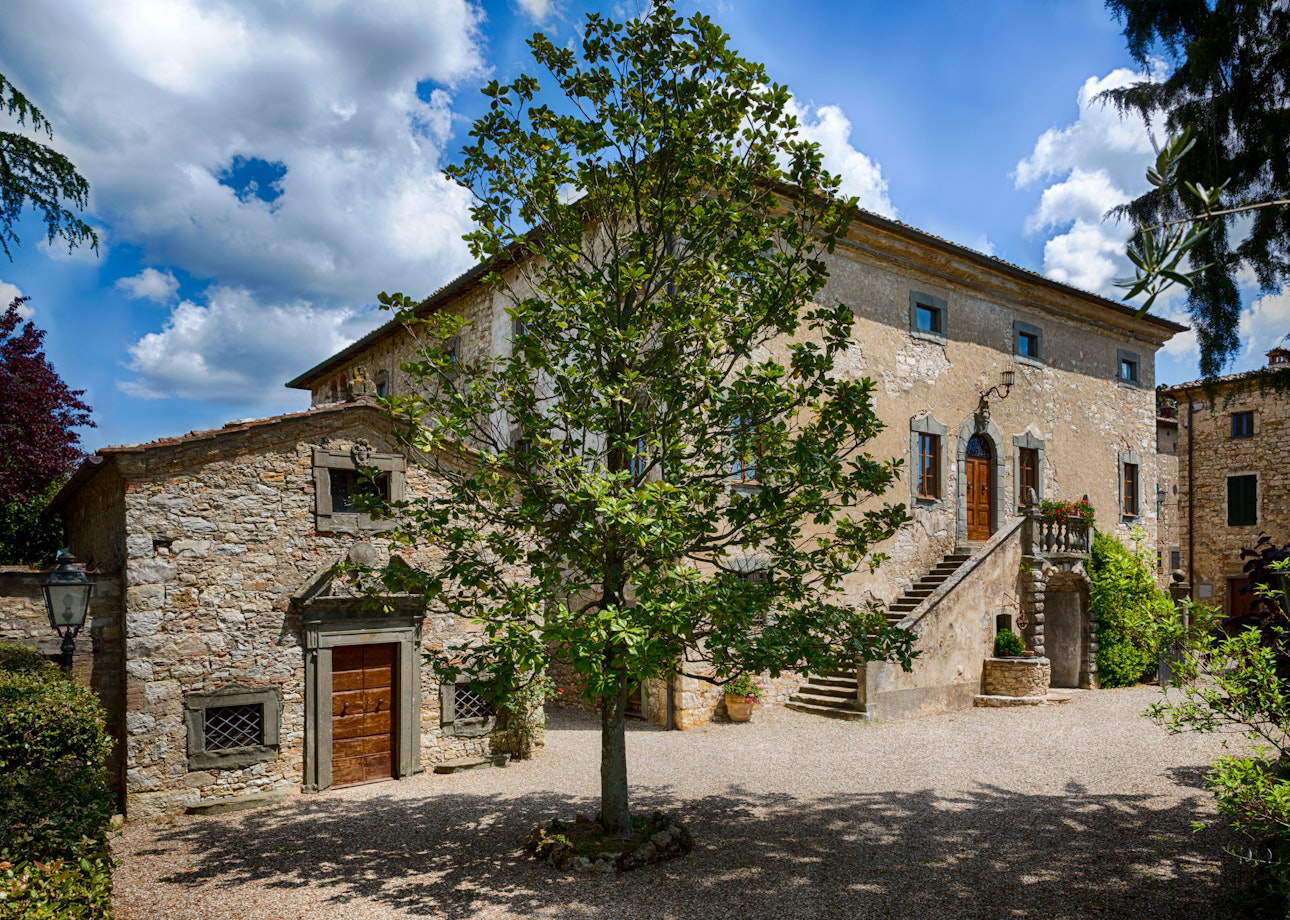
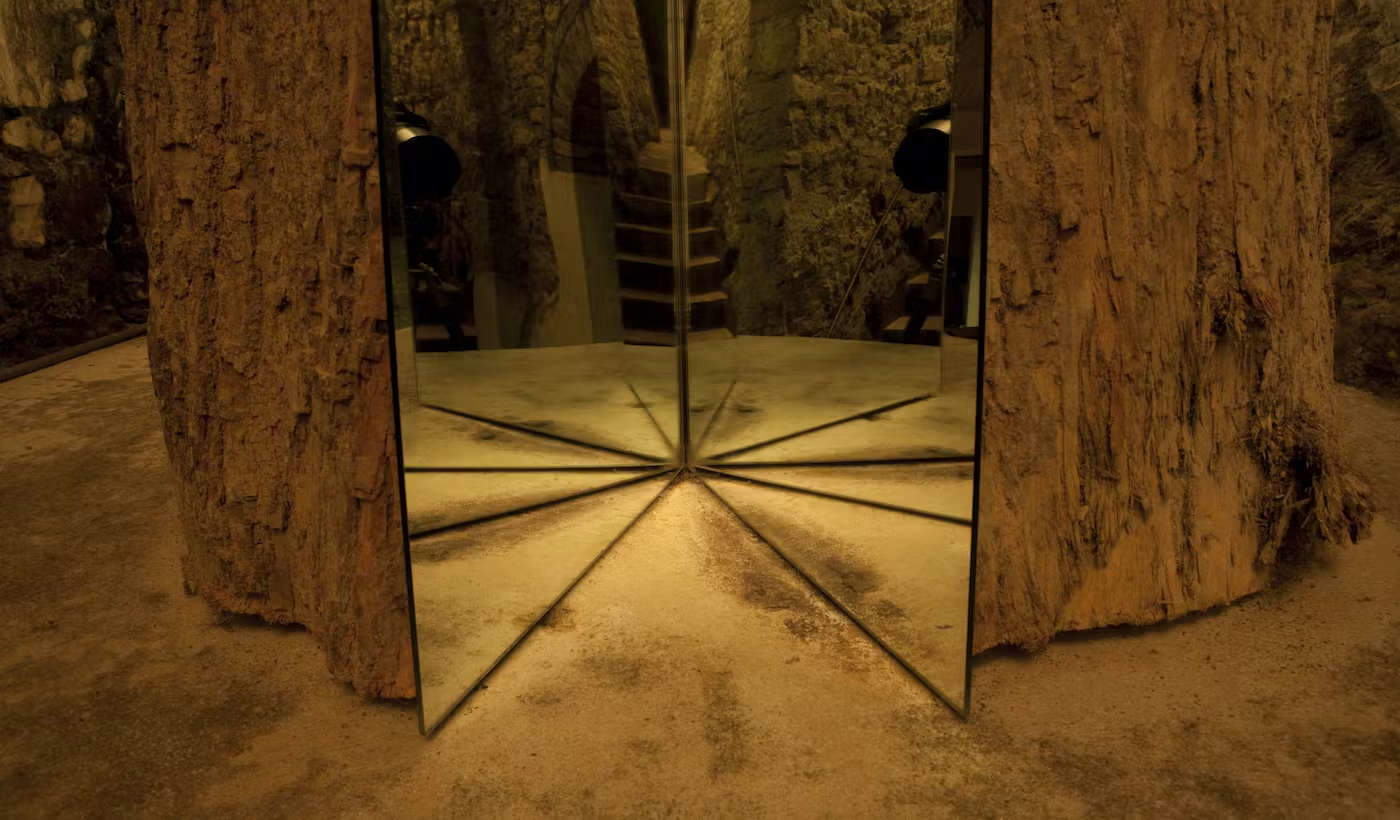

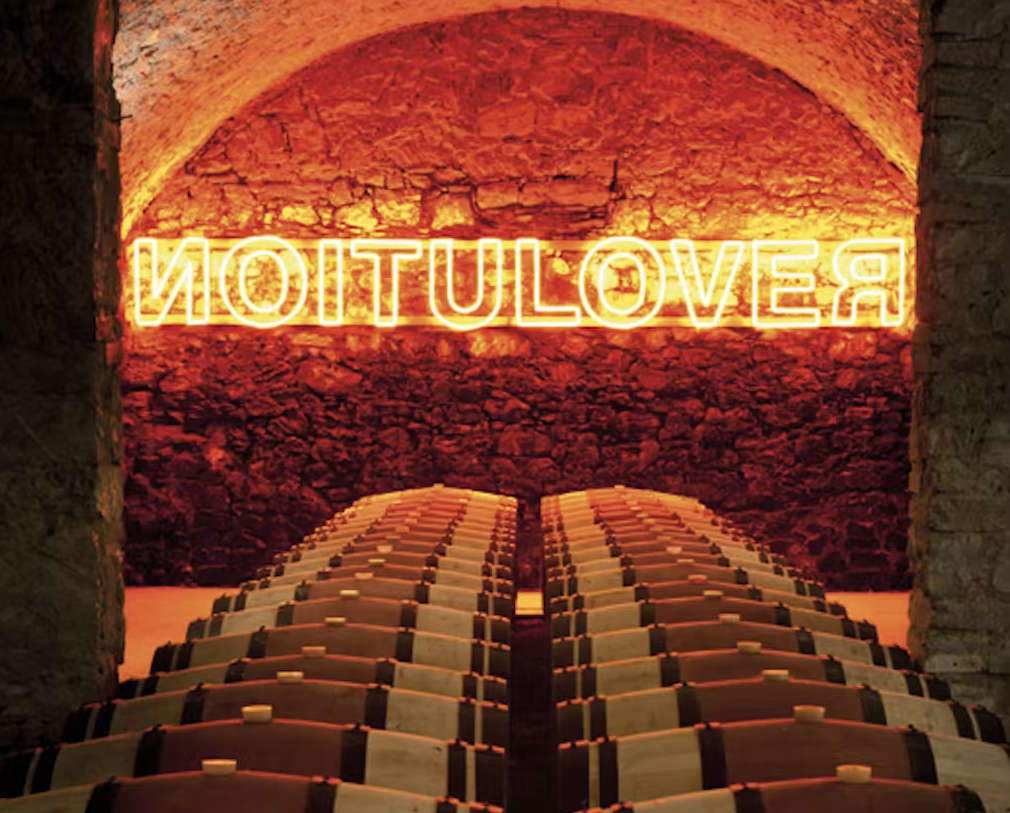
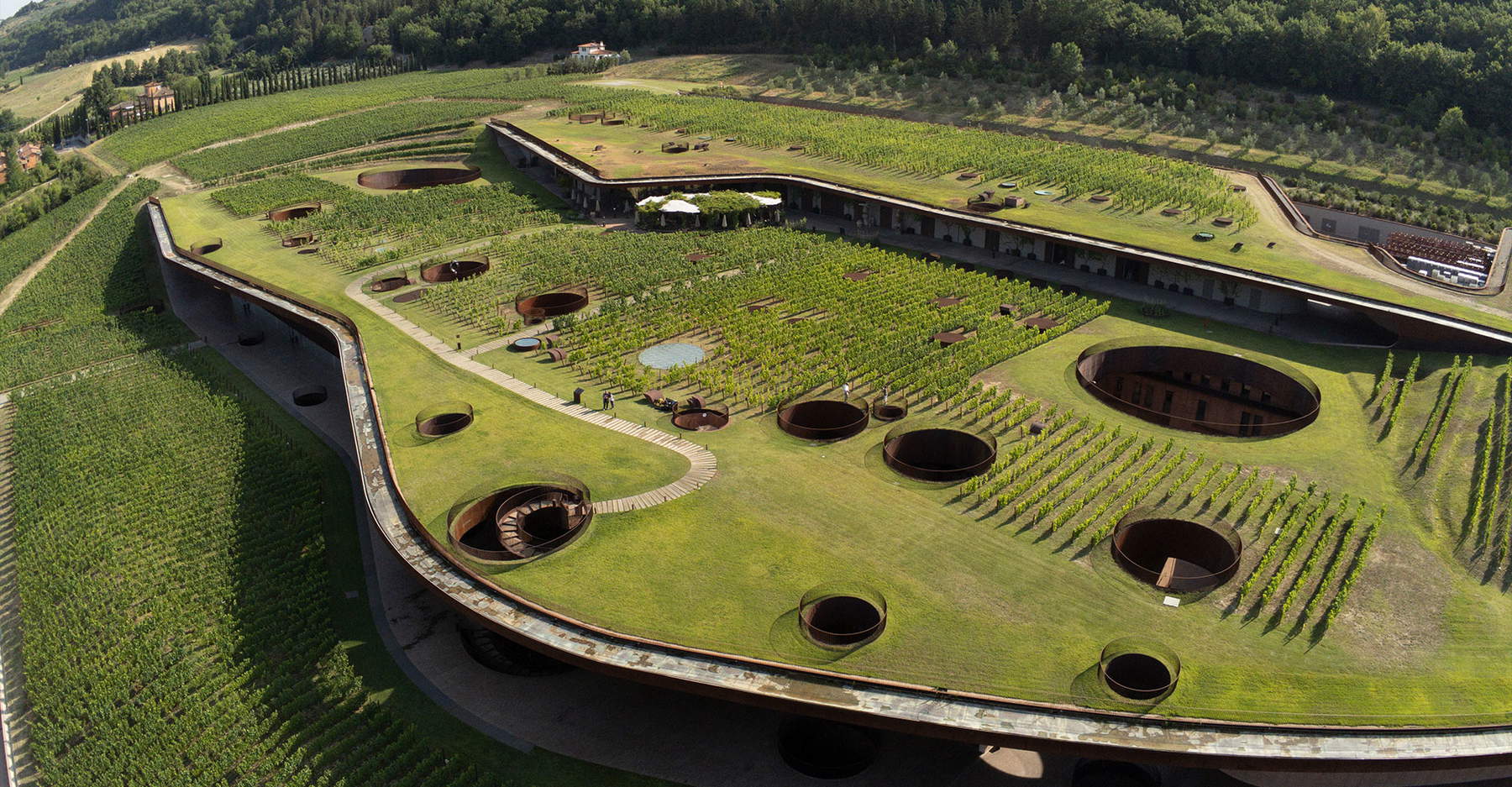
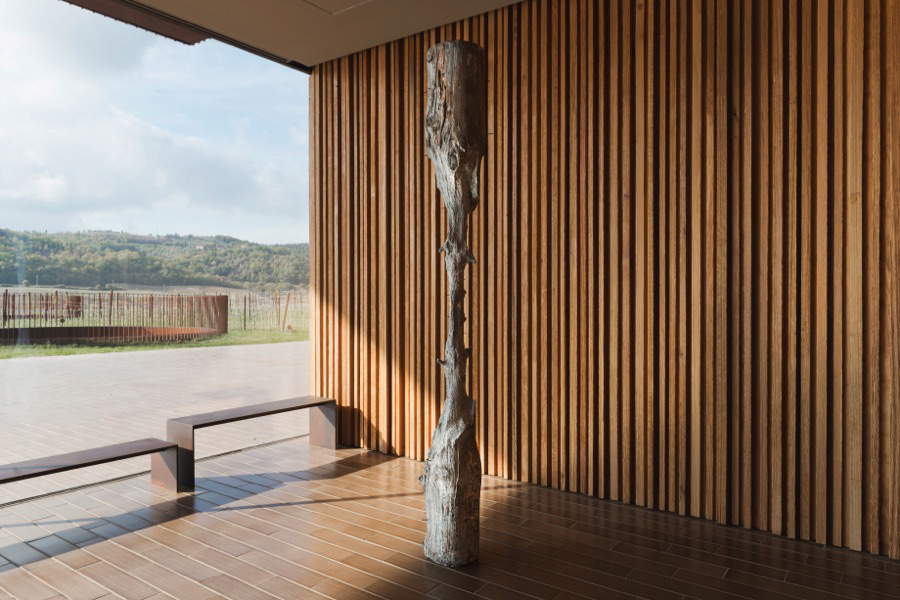
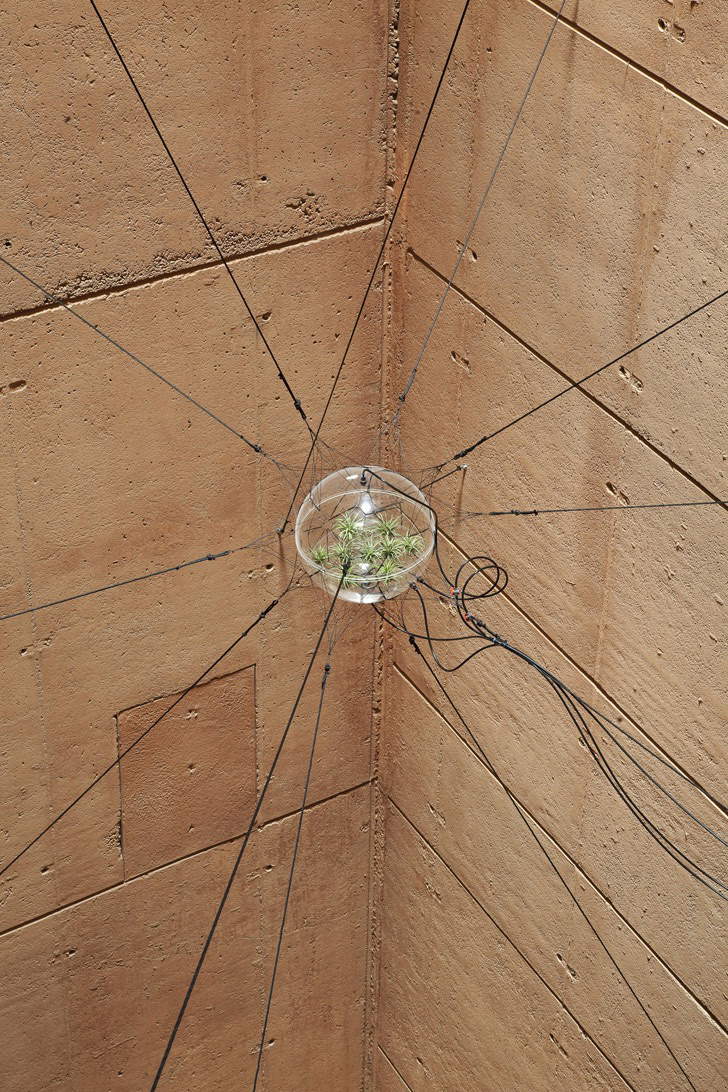
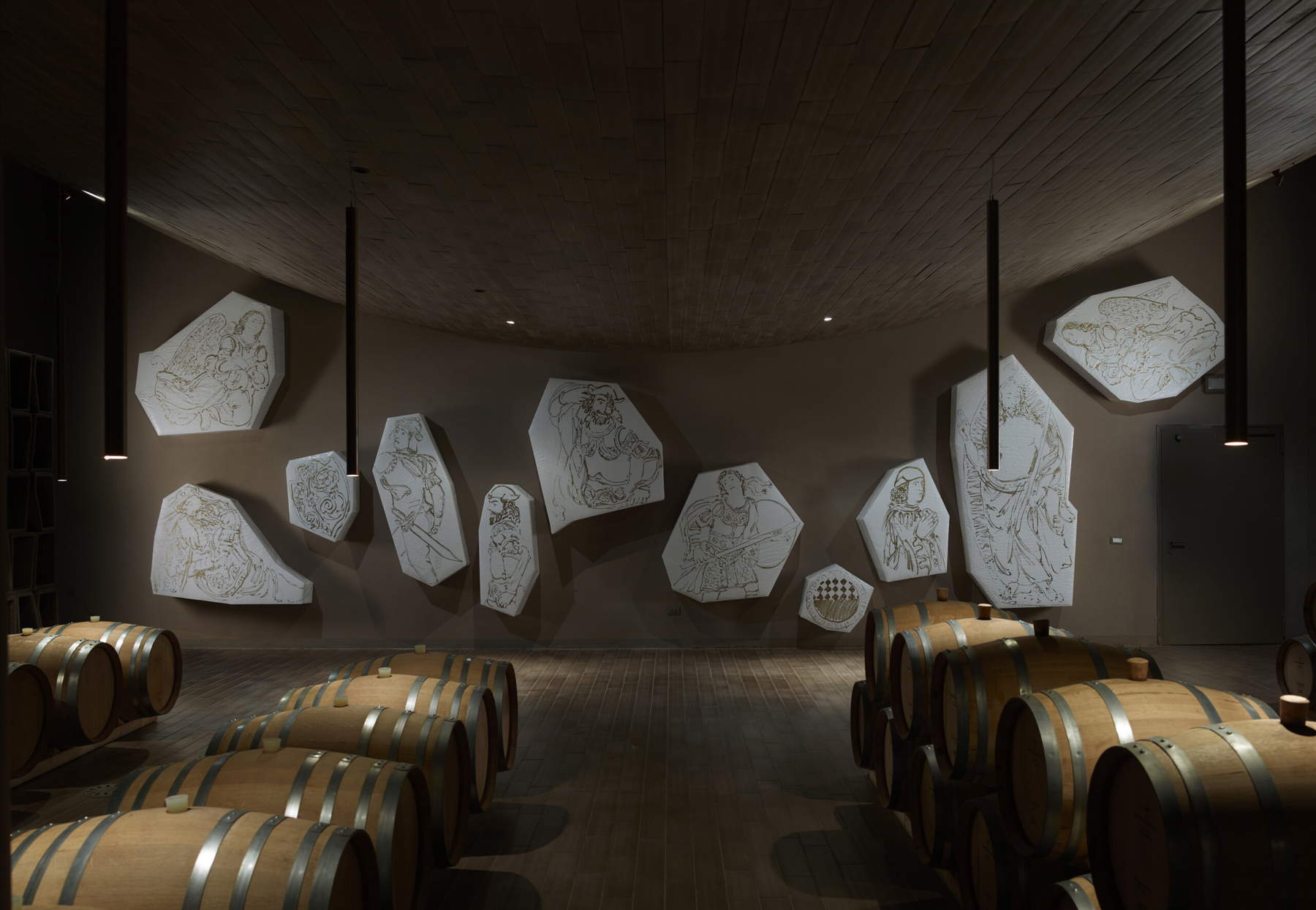
The Frescobaldi family also has its own collection, called Artists for Frescobaldi, and consisting of the works of some 15 artists housed at the Castelgiocondo estate near Montalcino. The names are those of the most in vogue contemporary artists: from Yuri Ancarani to Claudia Comte, from Francesco Arena to Gian Maria Tosatti, from Patrizio Di Massimo to Ra Di Martino, from Giovanni Ozzola to Matthew Brannon. The works are located in the spaces of the ancient village of Castelgiocondo, an agricultural complex dating back to the 15th century although it was transformed in later centuries. Again, the winery asked the artists to execute their works, letting themselves be inspired by the place, to “seal the happy encounter between wine and art,” producing a work and making a label for a bottle of wine. Frescobaldi has also devised an award, the “Artists for Frescobaldi Prize,” created in 2013, which for each edition involves three artists called upon to interpret the Castelgiocondo estate under the eye of a jury composed of three international contemporary art museum directors. The award’s roll of honor includes the names of Elisa Sighicelli, Michael Sailstorfer, Eric Wesley, Sonia Kacem, and Gian Maria Tosatti, while the jury has included Hans-Ulrich Obrist, Patrizia Sandretto Re Rebaudengo, Ralph Rugoff, Gianfranco Maraniello, Letizia Ragaglia, and Massimiliano Gioni, among others.
Then, in the Chianti Classico area, in Greve in Chianti, is based Tenuta Casenuove, an estate founded in 2015 by entrepreneur Philippe Austruy on a farm where wine production was already known since the 17th century. The particularity of this project lies in the fact that since the opening of the winery Austruy decided to enrich the estate with works of art, moved also by a personal passion. The estate has thus become home to the Le Radici dell’Arte project, created in collaboration with gallery owner Lorenzo Fiaschi: Following a philosophy similar to that of many other wineries in the wine sector, Tenuta Case Nuove also invites an artist each year to create “a work of art capable of representing the spirit of the estate, the richness of the territory and the passion of its people,” as the winery explains (the first installation was created by Cameroonian artist Pascale Marthine Tayou). In addition, the estate’s historic hall also hosts temporary exhibitions.
From the hinterland to the coast, from the places of Chianti Classico to those of Bolgheri, another winery that has decided to focus on art is Ornellaia, a leader in the production of Bolgheri DOC: since 2006, Ornellaia has been commissioning artists to produce limited editions of the estate’s wine through the Vendemmia d’artista project, which involves the production of a limited edition of 111 large-format bottles (specifically 100 Double Magnum, 10 Imperial and 1 Salmanazar), numbered and signed personally by the artist. A kind of multiple that Can be drunk, basically. What’s more, since 2012, each case of Ornellaia also includes a bottle with a label created by the artist selected for the annual vintage. Many prominent artists have taken part in the project: Luigi Ontani, Michelangelo Pistoletto, Ernesto Neto, William Kentridge, Shirin Neshat, Tomás Saraceno, Nathalie Djurberg & Hans Berg, and Joseph Kosuth. Ornellaia is also involved in other patronage projects: for example, since 2019 it has been supporting, with proceeds from the sale of its signature bottles, the Solomon R. Guggenheim Foundation whose Mind’s Eye program, designed to help the blind and visually impaired learn about art through all the senses, it funds. In the Montepulciano production area, on the other hand, the Tenuta Vallocaia stands out, founded by Swiss-born entrepreneur Rudi Bindella, who in the estate’s spaces has created a collection of mostly Swiss contemporary art where the works of some of the leading contemporary Swiss artists, such as Flora Steiger-Crawford, Rolf Brem, Christopher Lehmpfuhl and several others, stand out.

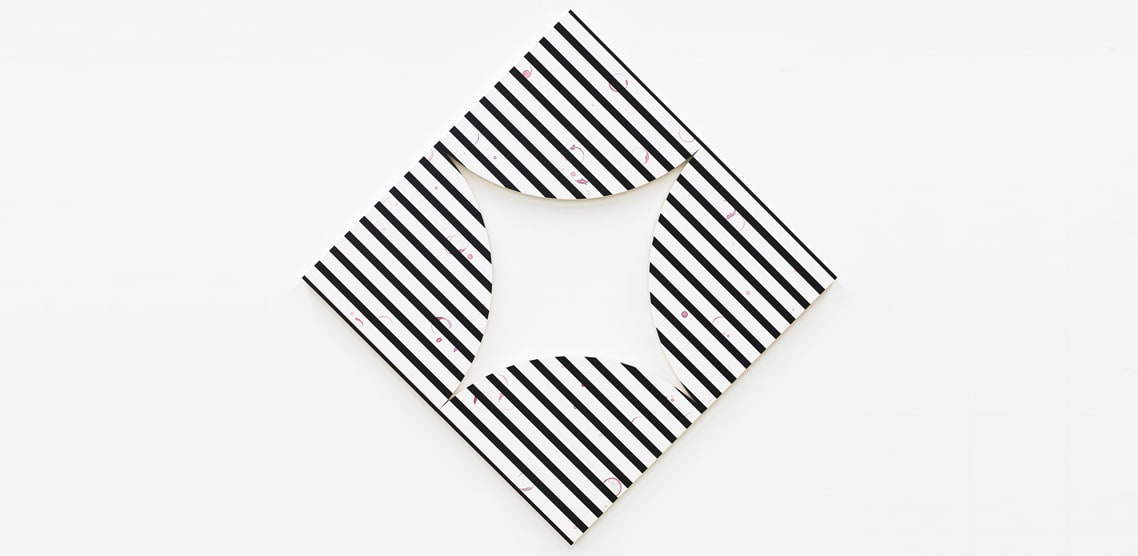
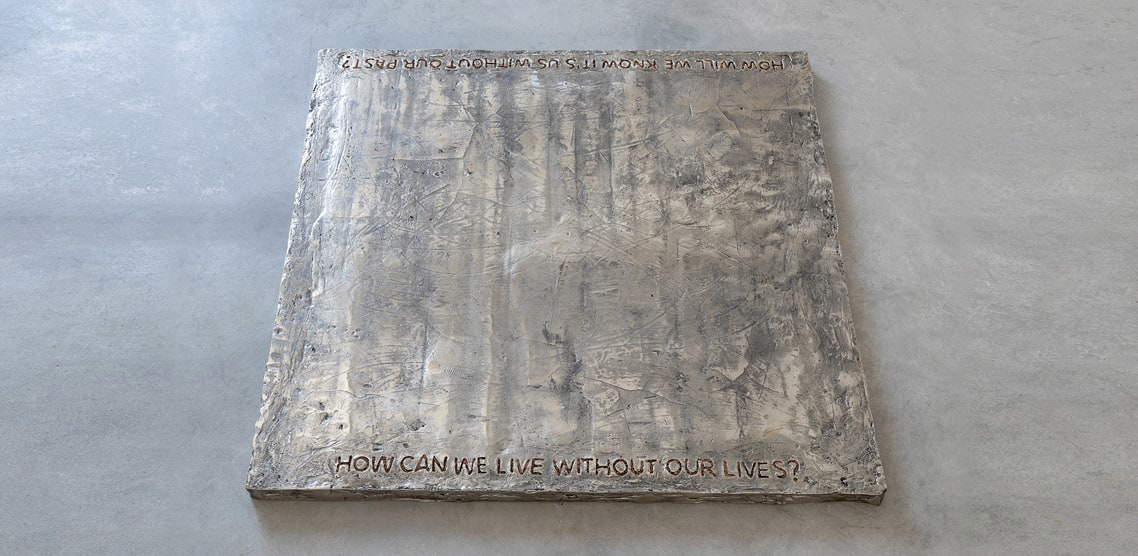
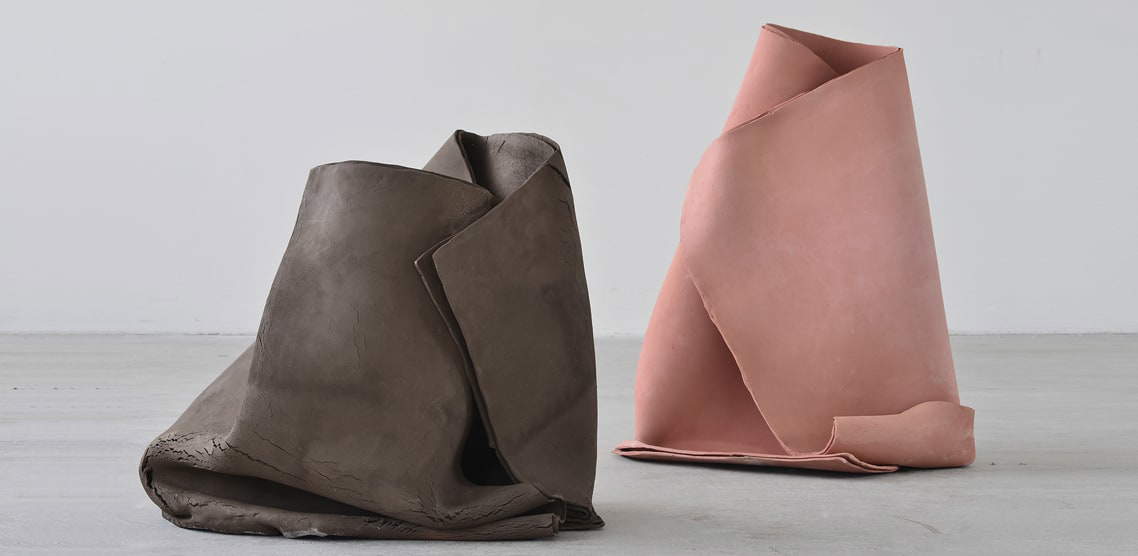
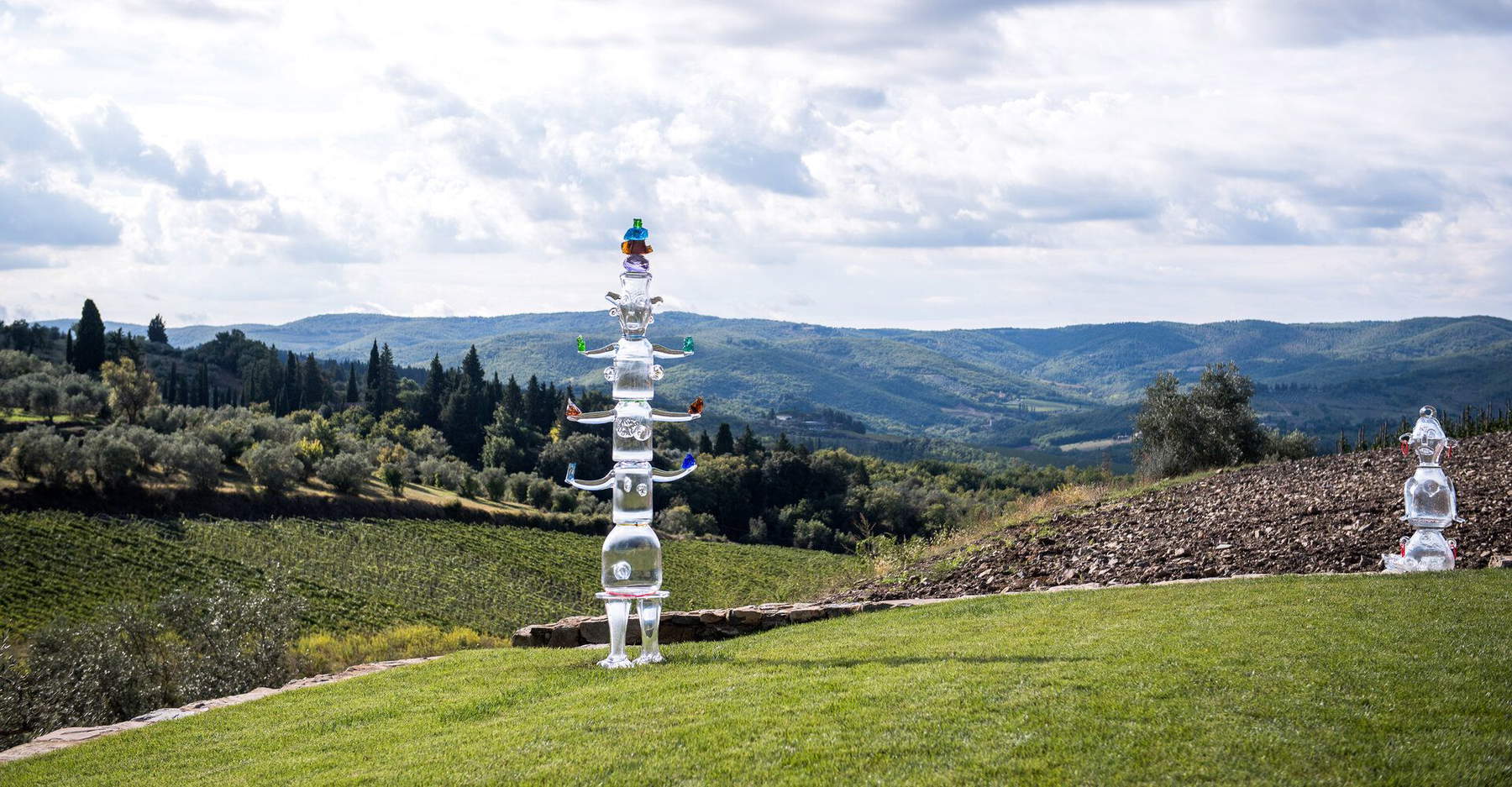

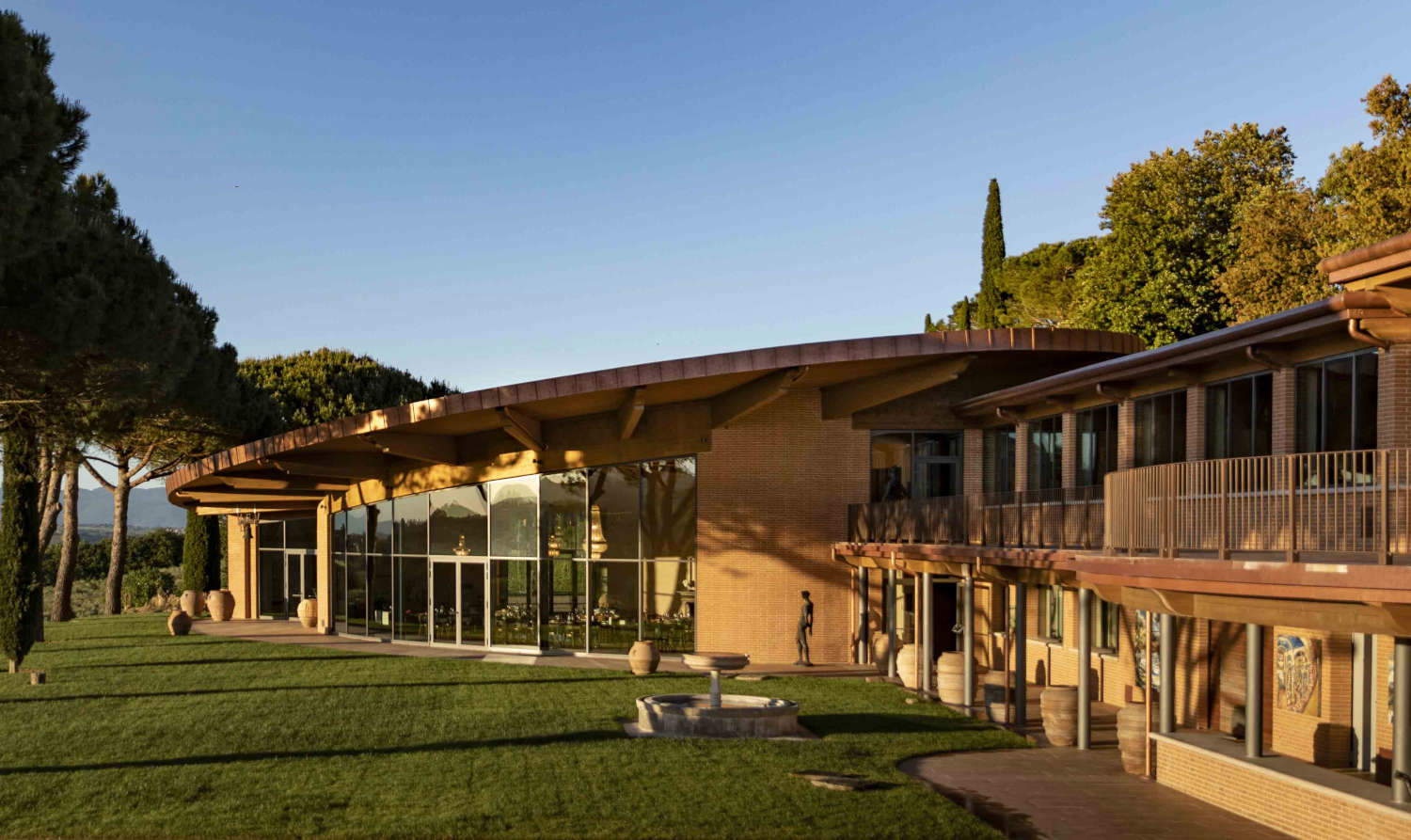
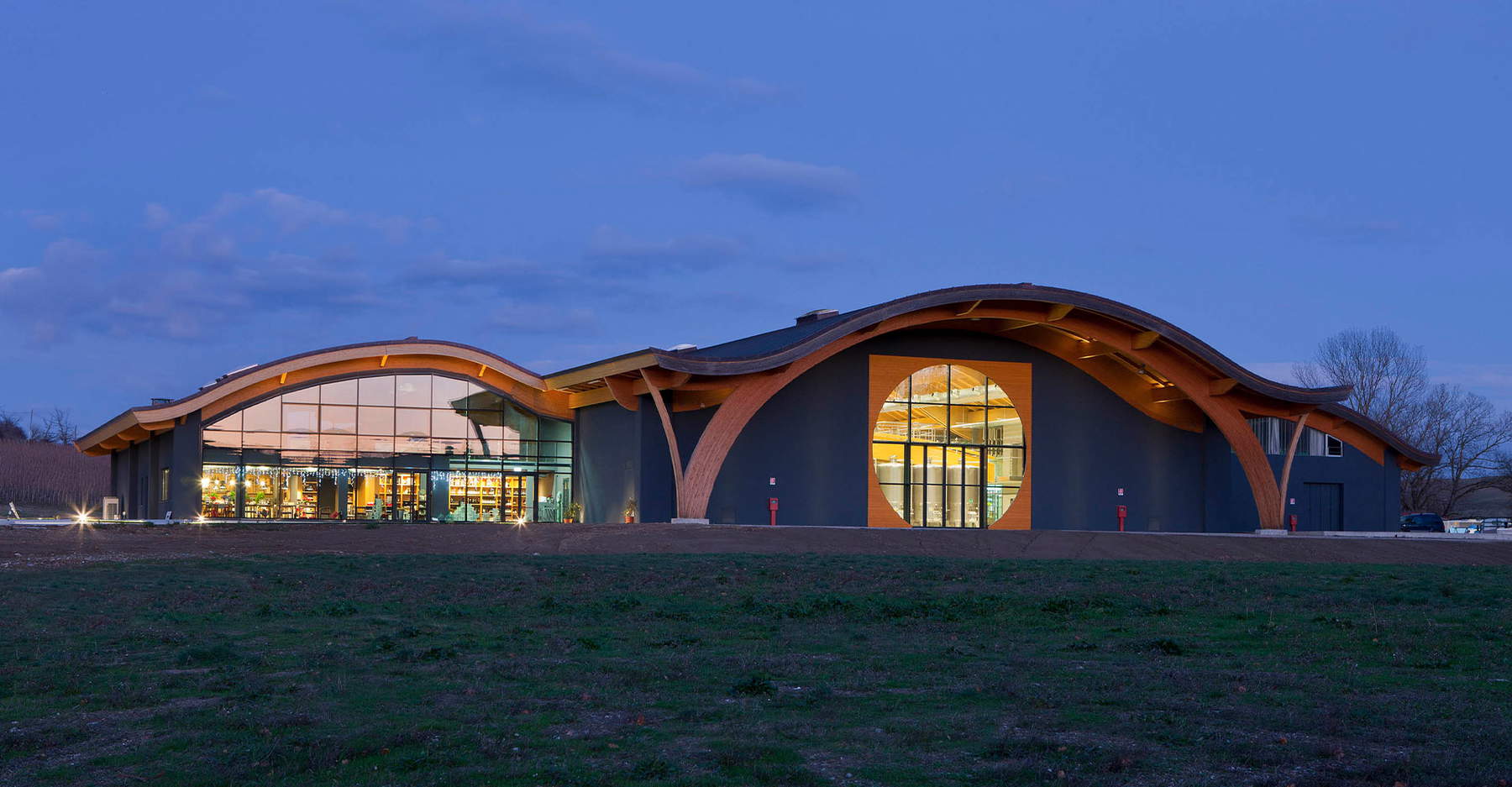
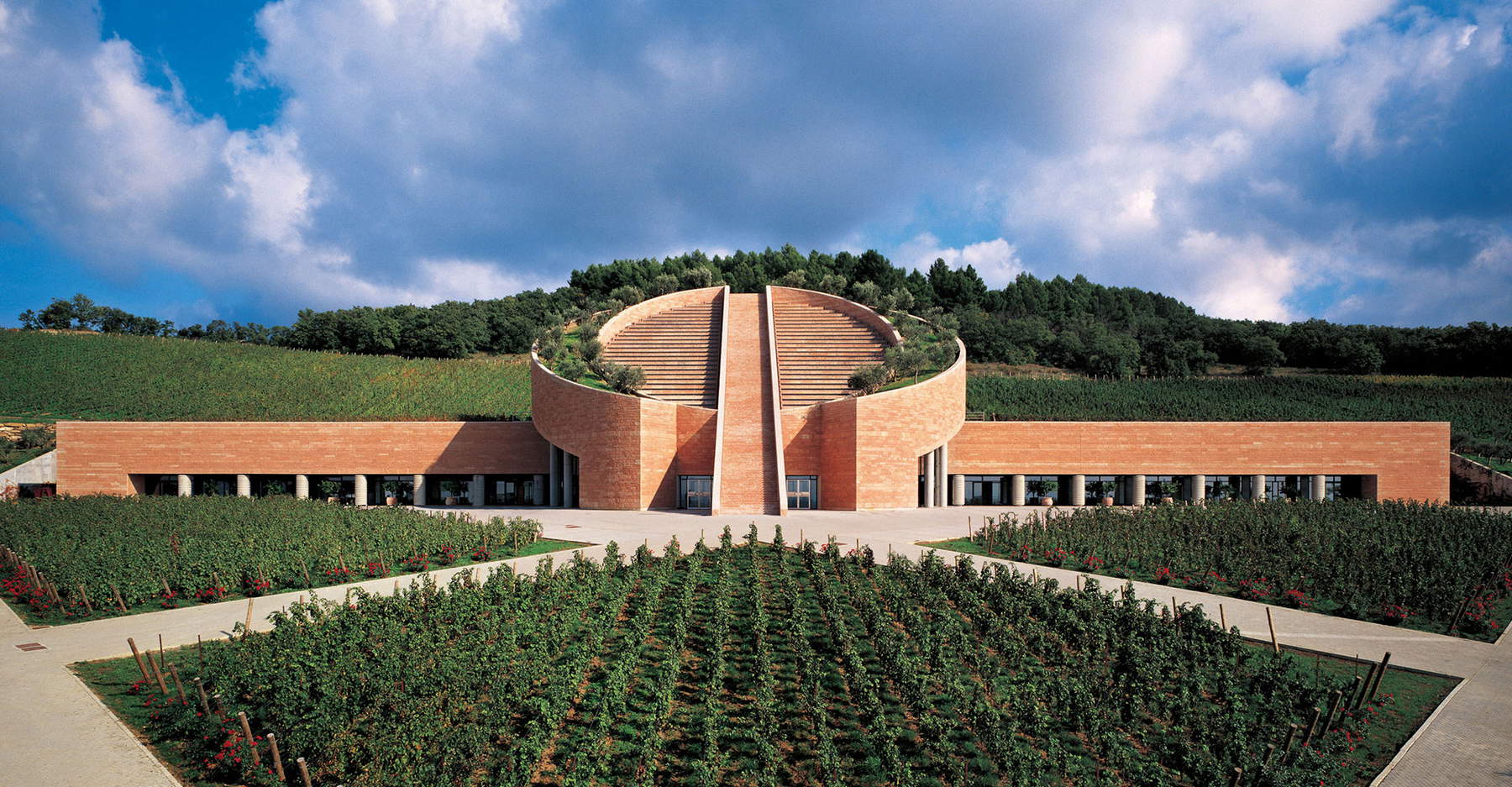
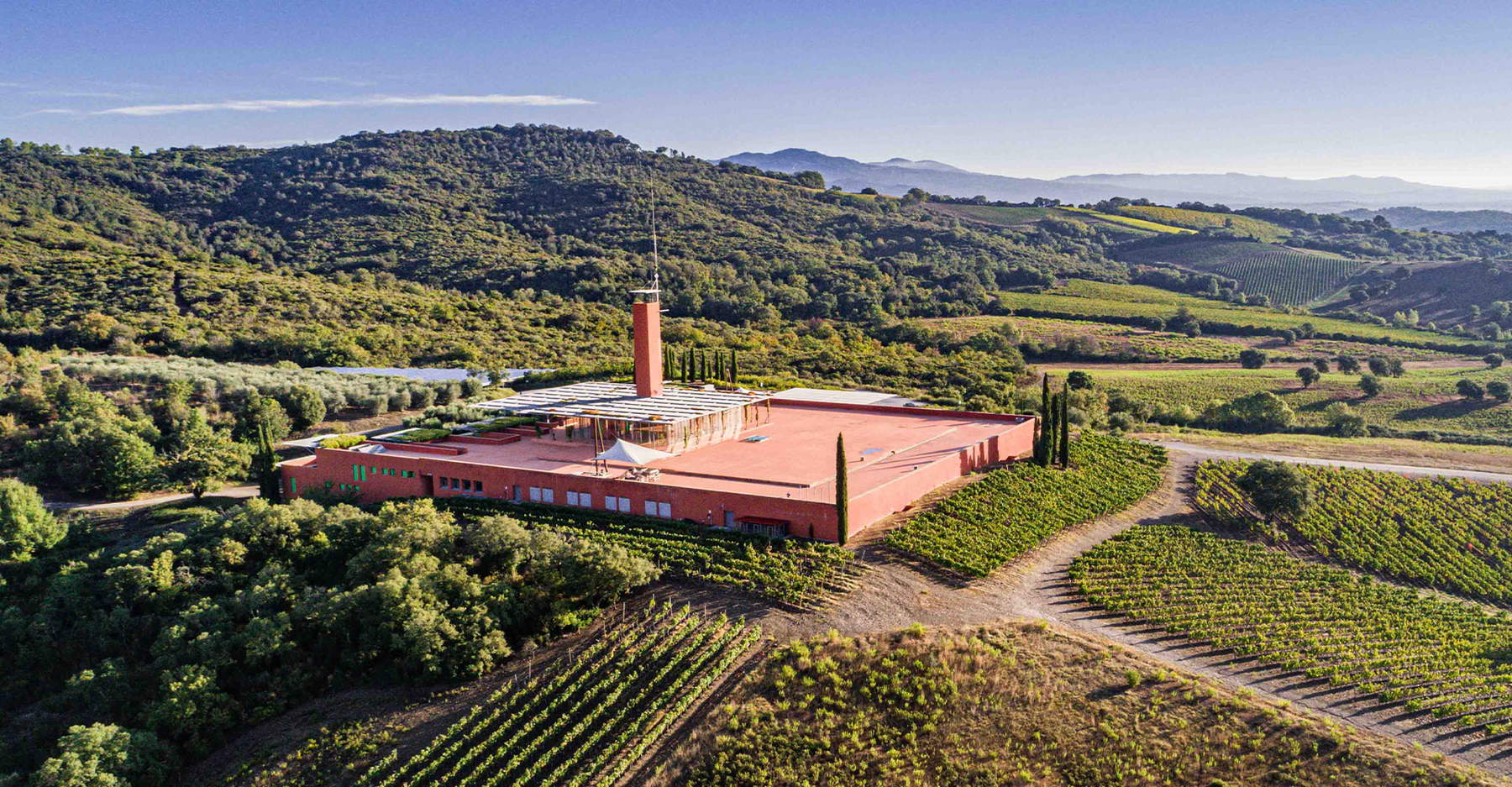
Finally, Tuscany is also home to several auteur wineries, that is, structures built by masters of contemporary design and architecture such as Mario Botta, Renzo Piano, and Tobia Scarpa: 14 of these wineries have recently given birth to a special circuit, Toscana Wine Architecture, which brings them all together with the aim of enhancing and publicizing these buildings that are integrated with the region’s landscape, made with cutting-edge technology, often open to visitors, or venues for tastings and exhibitions. They include, in addition to the Antinori estate in Chianti Classico (the one that hosts the Antinori Art Project), three other wineries in the Chianti Classico territory, namely Il Borro (designed by Elio Lazzerini), Castello di Fonterutoli (by thearchitect Agnese Mazzei) and Podere di Pomaio (Marisa Lo Cigno), and then four in the Tuscan Maremma, namely Tenuta Ammiraglia Frescobaldi (Piero Sartogo and Nathalie Grenon), Cantina Colle Massari (Edoardo Milesi), Le Mortelle (Studio Hydea) and Rocca di Frassinello (Renzo Piano), while the Cantina di Montalcino (Corrado Prosperi and Tommaso Giannelli) and Cantina Salcheto (Michele Manelli) are located in the Montalcino and Montepulciano areas, and finally, the Cantina Caiarossa (Isabella Monteforte) and Cantina Petra (Mario Botta) are on the Etruscan Coast, and it is on the island of Elba the Fattoria delle Ripalte (Tobia Scarpa).
Wine lovers and art enthusiasts (and often the two figures coincide) know that for years now Tuscany has been a destination that offers the possibility of knowing in detail experiences capable of making the most of this union, and the regional administration itself has understood the value, both cultural and economic, that the marriage of art and wine is able to unleash, and there are therefore several initiatives aimed at acquainting the public, including the international public, with the excellences of the territory capable of recognizing in art a powerful tool for affirmation. As, after all, it has always been, in the centuries-old spirit of patronage in Tuscany.
Warning: the translation into English of the original Italian article was created using automatic tools. We undertake to review all articles, but we do not guarantee the total absence of inaccuracies in the translation due to the program. You can find the original by clicking on the ITA button. If you find any mistake,please contact us.